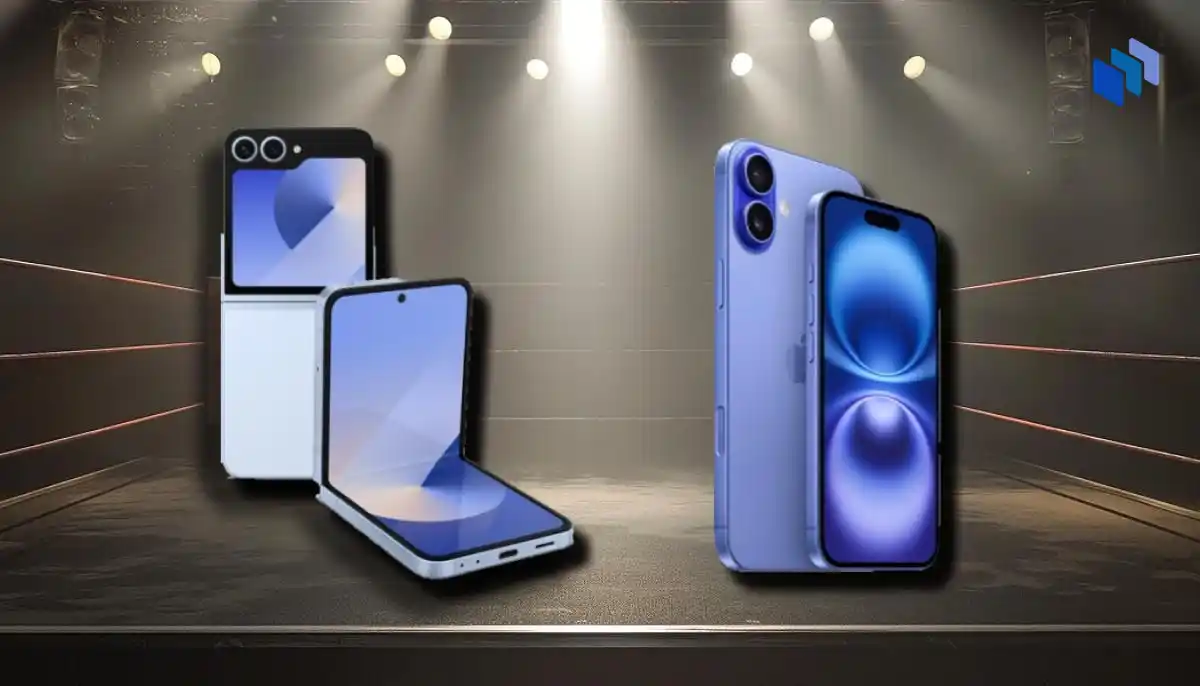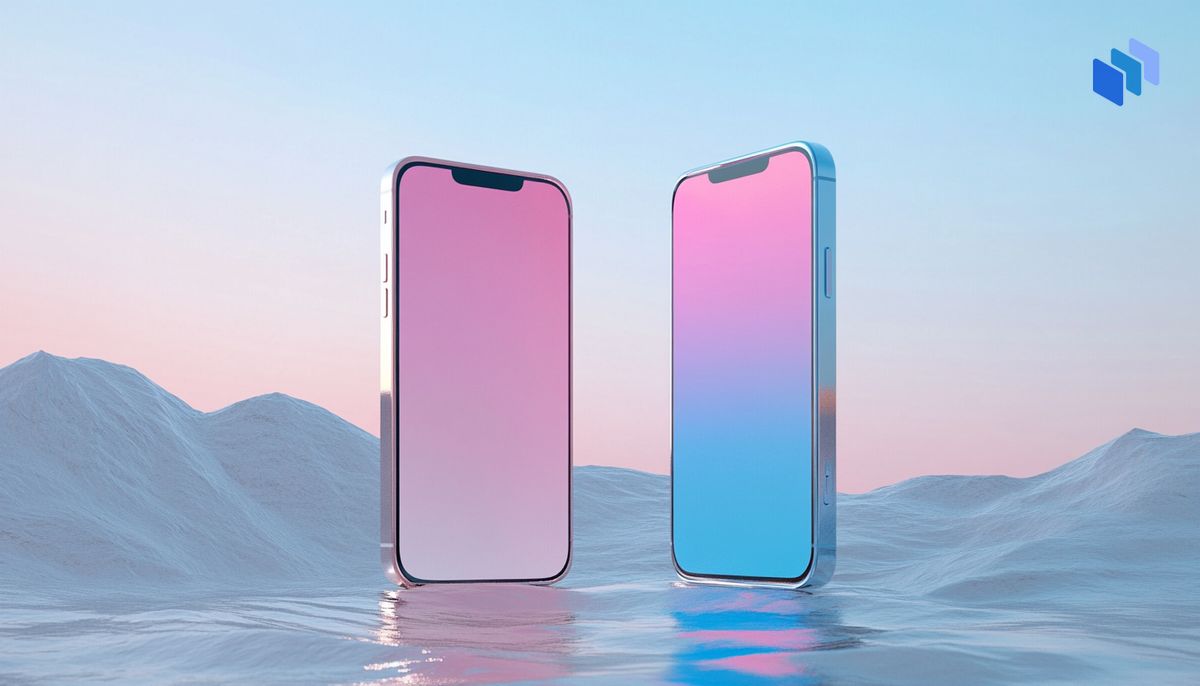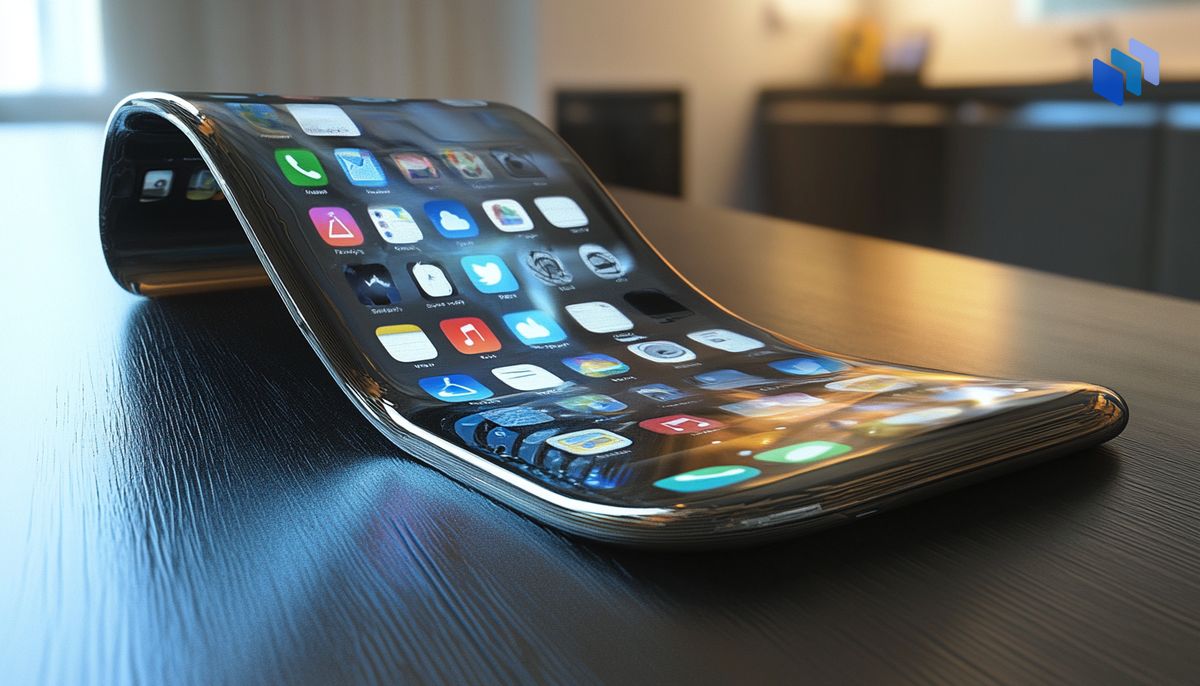The Samsung Galaxy Z Flip 6 represents the benchmark of foldable mobile technology, while Apple’s iPhone 16 series continues to refine the classic smartphone form factor.
As consumers weigh their options, the choice between these flagships is about how we interact with our devices and what we prioritize in our mobile experience.
This Galaxy Z Flip 6 vs. iPhone 16 comparison will dive deep into the strengths and weaknesses of each approach, helping you decide which phone aligns best with your needs and lifestyle.
Key Takeaways
- The Galaxy Z Flip 6 offers a unique foldable design, while the iPhone 16 maintains a traditional form factor.
- Both phones feature high-end processors, with the iPhone’s A18 Pro chip showing a slight edge in performance.
- The iPhone 16 Pro boasts a more versatile triple-camera system compared to the Z Flip 6’s dual-camera setup.
- Samsung’s foldable boasts a larger main display and an additional cover screen for quick interactions.
- Battery life is comparable between the two, but the iPhone 16 offers faster charging capabilities.
Galaxy Z Flip 6 vs. iPhone 16 vs. iPhone 16 Pro: Specs at a Glance
Galaxy Z Flip 6 vs. iPhone 16: Feature-by-Feature Comparison
Design & Form Factor
Our Choice for Design: Tie
- Z Flip 6 for innovation
- iPhone 16 for proven durability and simplicity
The Galaxy Z Flip 6 and iPhone 16 represent two distinct approaches to smartphone design.
iPhone 16 vs. Galaxy Z Flip 6 Sizes
The Galaxy Z Flip 6 embraces the foldable concept, offering a device that can transform from a compact, pocketable form to a full-sized smartphone.
- When folded, it measures just 85.1 x 71.9 x 14.9 mm, making it incredibly portable.
- Unfolded, it expands to a more traditional 165.1 x 71.9 x 6.9 mm.
In contrast, the iPhone 16 maintains Apple’s tried-and-true design philosophy with a sleek, unibody construction measuring 147.6 x 71.6 x 7.8 mm. It’s slightly smaller overall but maintains a consistent form factor.
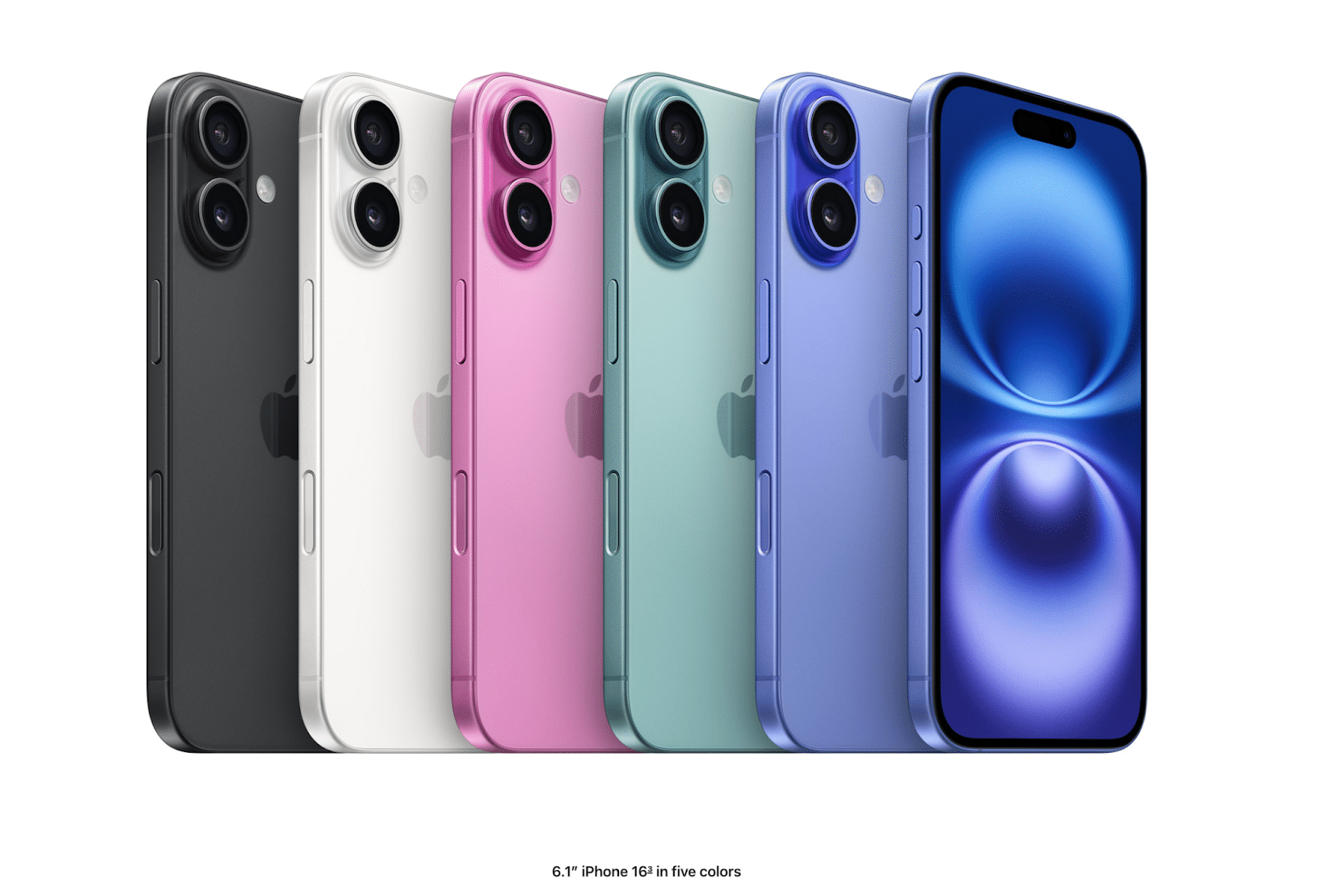
Practicality & Convenience
Practicality-wise, the Z Flip 6’s foldable design offers unique advantages. It can stand on its own for hands-free video calls or selfies, and the compact folded form is great for those with smaller pockets or bags.
However, the folding mechanism adds complexity and potential points of failure compared to the simple classic iPhone 16’s form.
Durability & Build Quality
In terms of durability, both devices have made strides. The Z Flip 6 features an IPX8 water resistance rating, impressive for a foldable device, and uses Corning Gorilla Glass Victus 2 for protection. The iPhone 16 boasts an IP68 rating and uses Apple’s Ceramic Shield front glass, which the company claims is tougher than any smartphone glass.
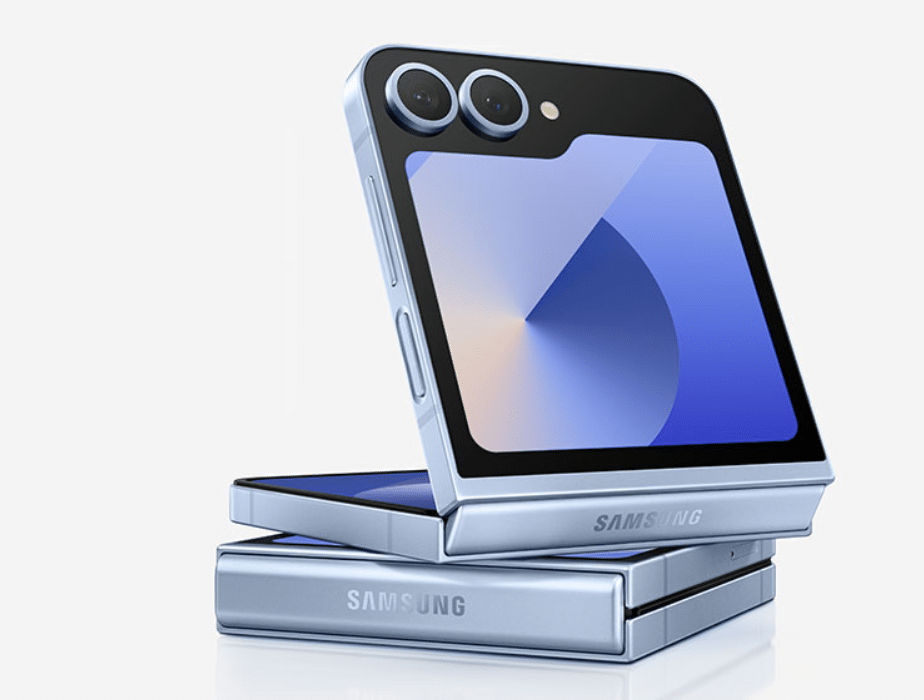
Display Technology
Our Choice for Display: Galaxy Z Flip 6
For its versatile dual-screen setup and higher refresh rate
Resolution & Refresh Rate
The Galaxy Z Flip 6 features a 6.7-inch Dynamic AMOLED main display with a resolution of 2640 x 1080 pixels and a 120Hz refresh rate. Its standout feature is the 3.4-inch Super AMOLED cover display, allowing quick access to notifications and basic functions without opening the phone.
The iPhone 16 sports a 6.1-inch OLED display with a 2556 x 1179 resolution. While it lacks a secondary display, its always-on feature provides quick access to time and notifications.
Both phones offer excellent color accuracy and vibrant visuals, but the Z Flip 6 has an edge with its 120Hz refresh rate, providing smoother scrolling and animations compared to the iPhone 16’s 60Hz display.
Brightness
In terms of brightness, both devices perform admirably. The Z Flip 6 can reach peak brightness levels of around 1,200 nits, while the iPhone 16 is capable of 2,000 nits peak brightness for HDR content, giving it an advantage in extreme outdoor conditions.
The Z Flip 6’s cover screen adds another dimension to its display capabilities. This 3.4-inch display allows users to check notifications, take selfies, and even run some apps without opening the main display, adding convenience and potentially saving battery life.
Performance & Chipsets
For its slight edge in sustained performance and optimization
Processor & Chipset
The Galaxy Z Flip 6 is powered by Qualcomm’s Snapdragon 8 Gen 3 chipset, while the iPhone 16 features Apple’s A18 chip. Both are top-tier processors built on advanced manufacturing processes, offering excellent performance and efficiency.
In benchmark tests, the A18 chip typically edges out the Snapdragon 8 Gen 3 in single-core performance, showcasing Apple’s strength in chip design. However, the Snapdragon often performs comparably in multi-core tests.
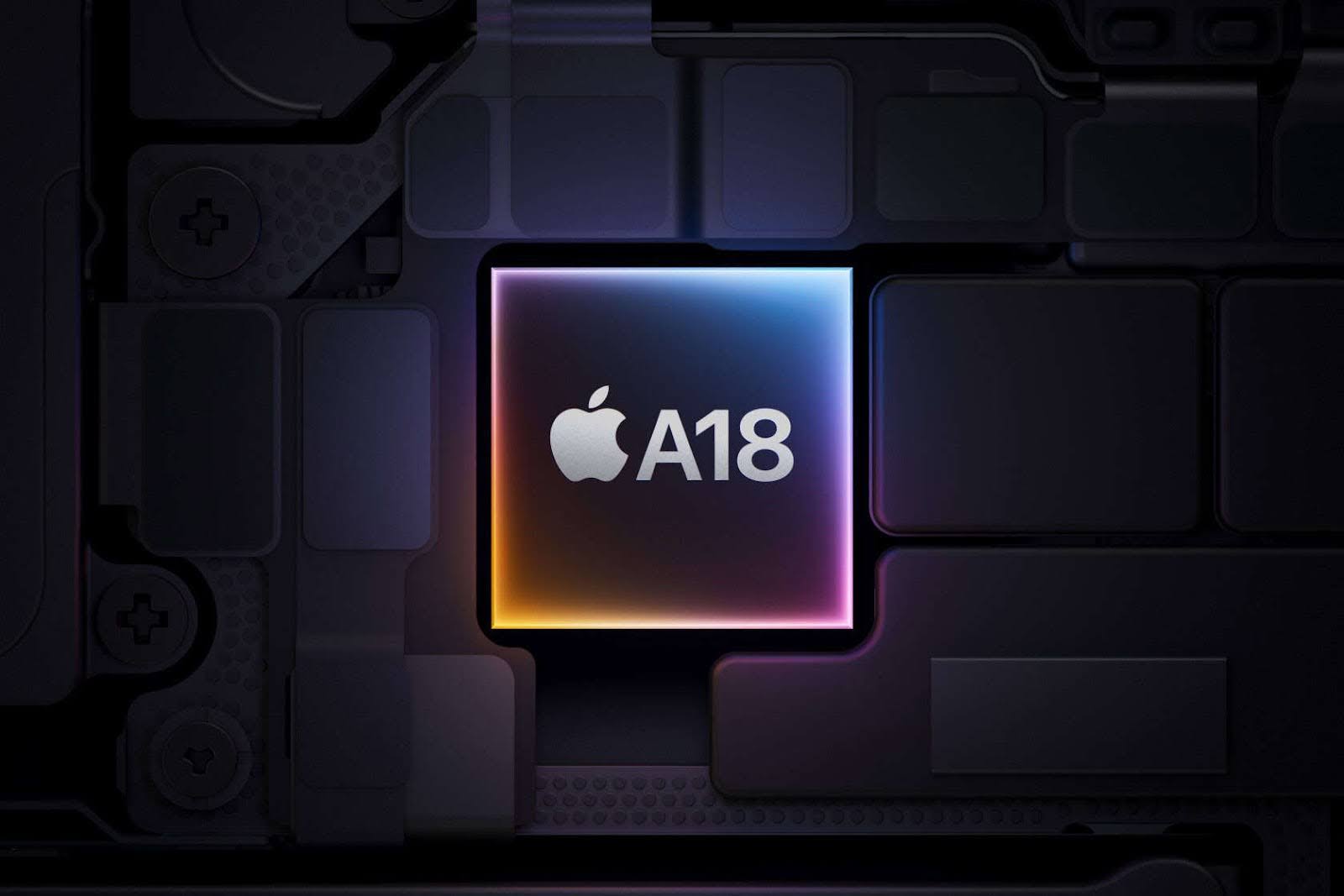
Real-World Performance
Real-world performance for both devices is exceptional. Users can expect smooth multitasking, quick app launches, and seamless navigation with the 16GB of RAM in the Z Flip 6 and 8GB RAM in the iPhone 16. Even with the higher RAM in the Z Flip 6, the iOS’s efficient memory management could give a slight advantage here.
For intensive tasks like video editing or gaming, both phones perform admirably. The iPhone 16 tends to maintain more consistent performance over extended periods, while the Z Flip 6 may throttle slightly to manage heat in its compact form factor.
Camera Systems
For its consistent performance and superior computational photography
- The Galaxy Z Flip 6 features a dual-camera setup with a 50MP main sensor and a 12MP ultra-wide lens.
- The iPhone 16 also sports a dual-camera system with a 48MP main camera and a 12MP ultra-wide lens.
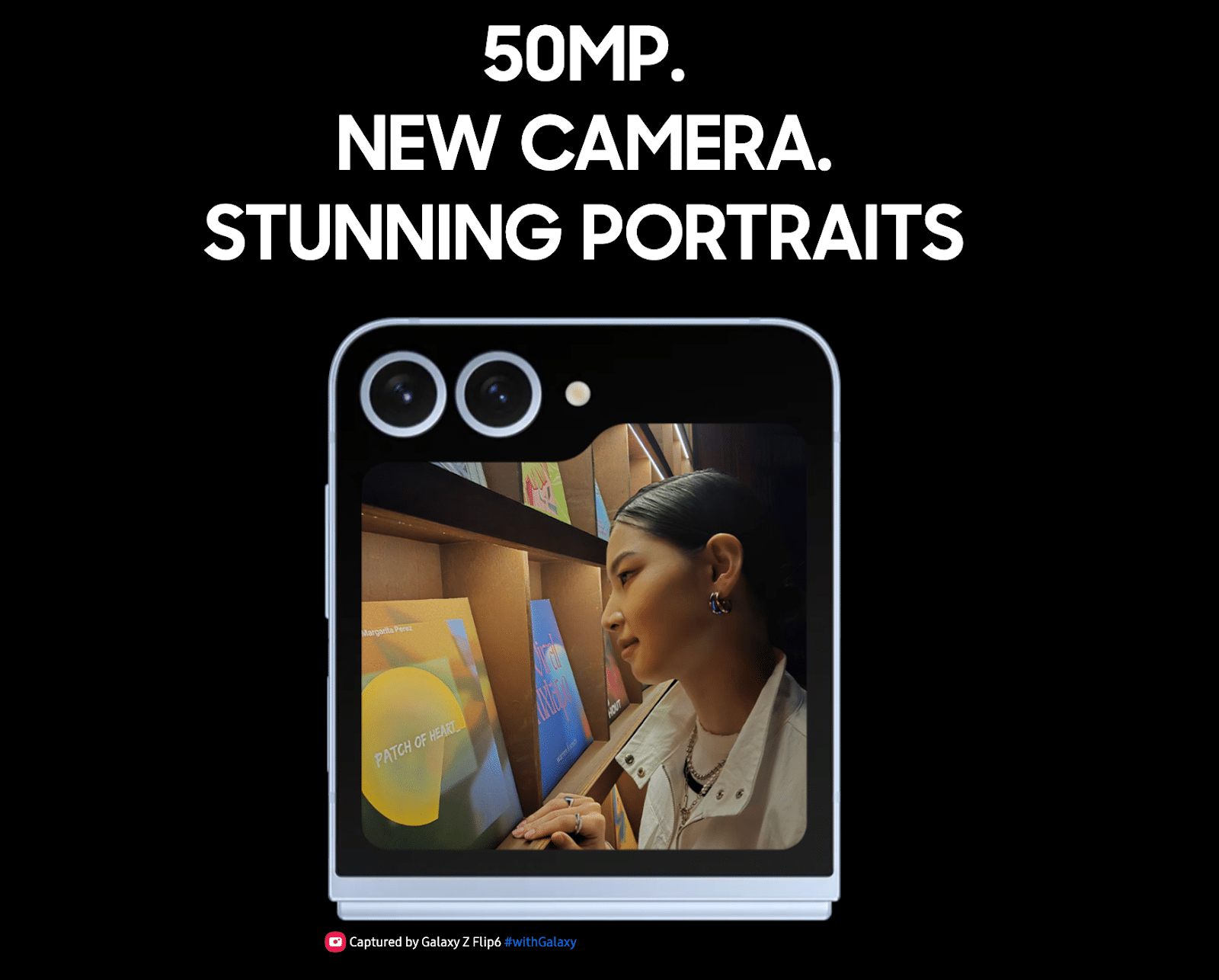
Photo Quality
The main cameras on both devices produce excellent photos with vibrant colors and good dynamic range. The Z Flip 6’s 50MP sensor offers slightly more detail in ideal lighting conditions, while the iPhone 16 tends to have an edge in low-light performance thanks to Apple’s computational photography.
Ultra-wide lenses on both phones perform similarly, capturing expansive scenes with minimal distortion. Neither phone includes a dedicated telephoto lens, relying on digital zoom for distant subjects.
Unique Camera Features
The Z Flip 6’s unique form factor allows for creative shooting angles and hands-free capture, which can be particularly useful for vloggers or selfie enthusiasts.
Its cover screen can also act as a viewfinder for high-quality selfies using the main cameras.
Both devices offer special features like portrait mode and night mode, but Apple’s implementation often produces more natural-looking results.
Video Capabilities
For video, both phones can shoot up to 4K at 60fps. The iPhone 16 generally offers more stable footage and smoother transitions between lenses, while the Z Flip 6 provides more versatile shooting options due to its foldable design.
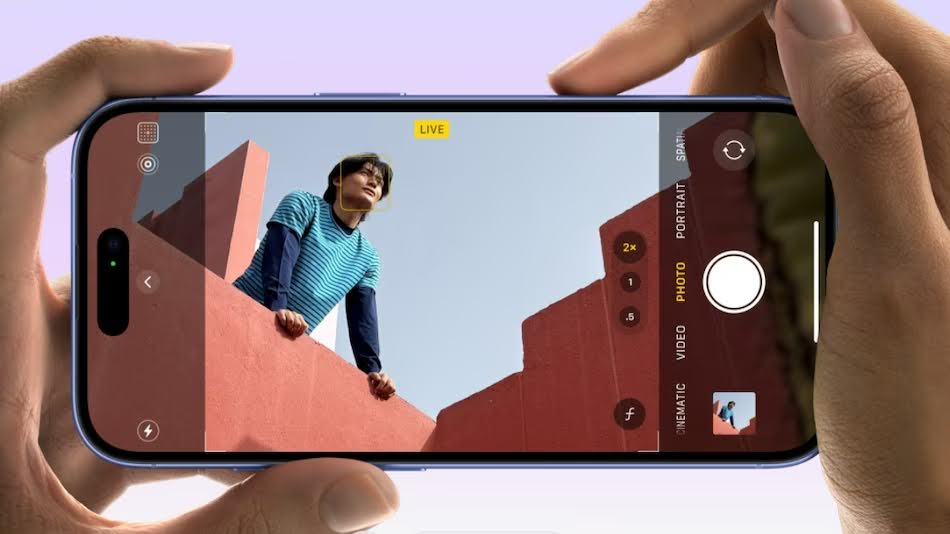
Battery Life & Charging
- Z Flip 6 for larger capacity
- iPhone 16 for efficiency and MagSafe versatility
Battery Capacity & Power Efficiency
The Galaxy Z Flip 6 houses a 4,000 mAh battery, while the iPhone 16 contains a 3,561 mAh cell. Despite the capacity difference, both phones offer comparable all-day battery life under typical usage.
The Z Flip 6’s larger battery is offset by its larger display and the potential additional power drawn from its folding mechanism. The iPhone 16, benefiting from Apple’s efficient hardware-software integration, manages to stretch its smaller battery effectively.
Battery Life in Typical & Heavy Usage
In typical usage, both phones can last a full day.
Heavy users might find the Z Flip 6 depleting slightly faster, especially if frequently using the cover display.
Charging Options & Speed
- For charging, the Z Flip 6 supports 25W wired fast charging and 15W wireless charging.
- The iPhone 16 offers slightly faster 27W wired charging and 15W MagSafe wireless charging.
Both phones can be topped up to about 50% in 30 minutes with their respective fast charging methods.
The iPhone 16 has a slight edge with its MagSafe system, which ensures perfect alignment for wireless charging and opens up a range of magnetic accessories.
Which Phone Is Best for You in 2024?
Choosing between the Galaxy Z Flip 6 and iPhone 16 largely depends on your priorities and use cases. Here are recommendations for different user types:
- Tech Enthusiasts: The Galaxy Z Flip 6 is ideal for those who love cutting-edge technology and want a unique, conversation-starting device. Its foldable design offers a fresh take on smartphone usage.
- Photographers: The iPhone 16 has a slight edge for photography enthusiasts. While both phones take excellent photos, Apple’s computational photography and consistent performance give it an advantage, especially in challenging lighting conditions.
- Multitaskers: The Z Flip 6’s larger screen when unfolded and the ability to use the phone in a half-open “Flex mode” make it great for multitasking. It’s perfect for those who often juggle multiple apps or need a hands-free setup.
- Professionals: The iPhone 16 might be preferable for business users due to its consistent performance, robust security features, and seamless integration with other Apple devices and services.
- Social Media Creators: The Z Flip 6’s versatile form factor, including its ability to stand on its own for hands-free video recording, makes it an excellent choice for vloggers and social media content creators.
- Minimalists: Those who prefer a simpler, more pocket-friendly device might lean towards the Z Flip 6. When folded, it takes up less space than traditional smartphones.
- Ecosystem Investors: If you’re already invested in either the Apple or Android
ecosystem, sticking with that system (iPhone 16 for Apple, Z Flip 6 for Android) will provide the most seamless experience across your devices. - Battery Conscious Users: While both offer all-day battery life, the iPhone 16’s power efficiency might give it a slight edge for those particularly concerned about battery longevity.
Ultimately, both phones are high-performance devices capable of handling a wide range of tasks.
Your choice of Galaxy Z Flip 6 vs. iPhone 16 or vice versa should align with your personal preferences, usage patterns, and which unique features matter most to you.
The Bottom Line
Both the Galaxy Z Flip 6 and iPhone 16 are exceptional devices that cater to different preferences.
The Z Flip 6 stands out with its innovative foldable design, offering a unique user experience and compact form factor. The iPhone 16, on the other hand, excels in consistent performance, camera quality, and seamless ecosystem integration.
Your choice ultimately depends on whether you prioritize new design and flexibility or reliable performance and a tried-and-true user experience.
